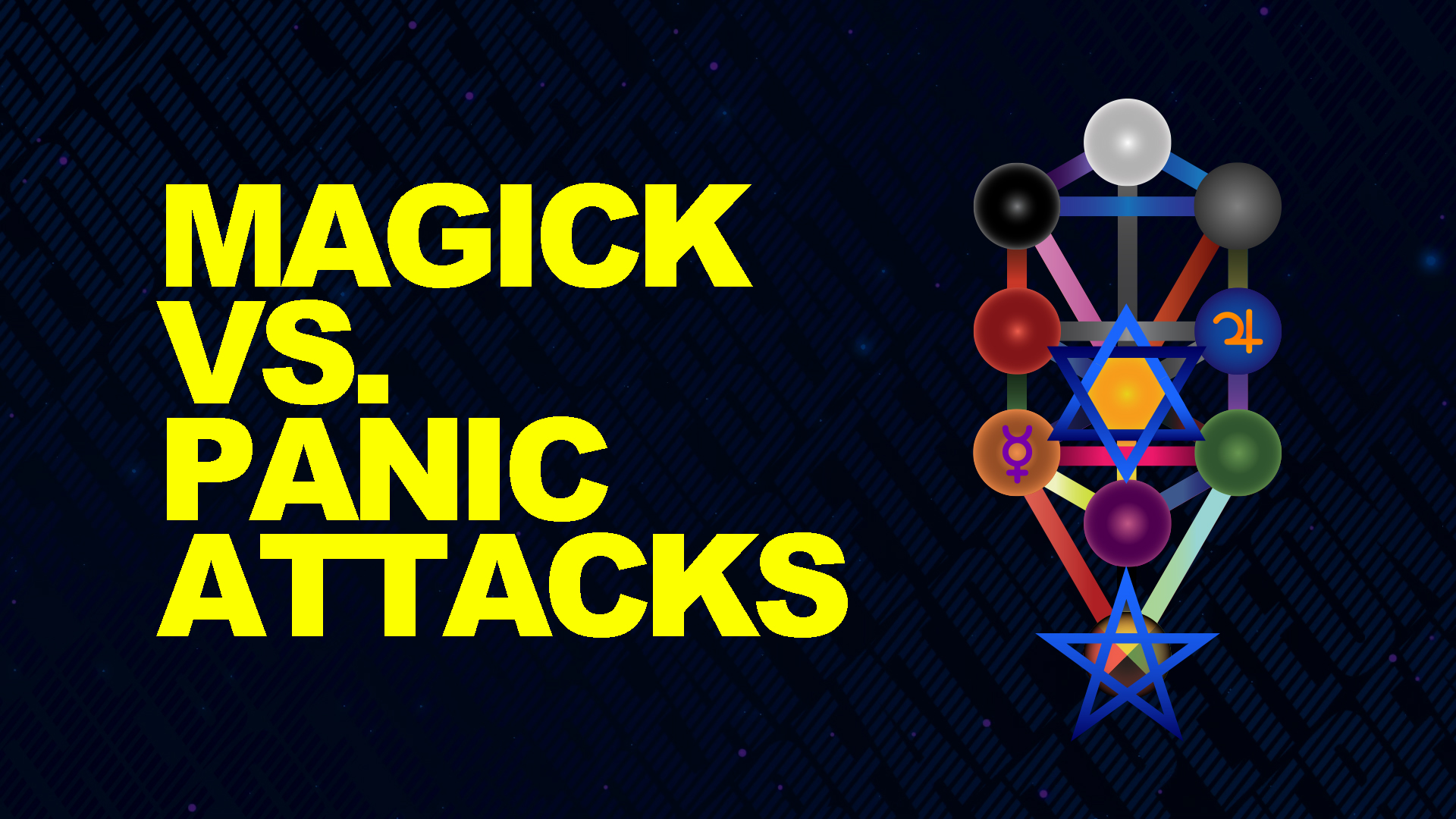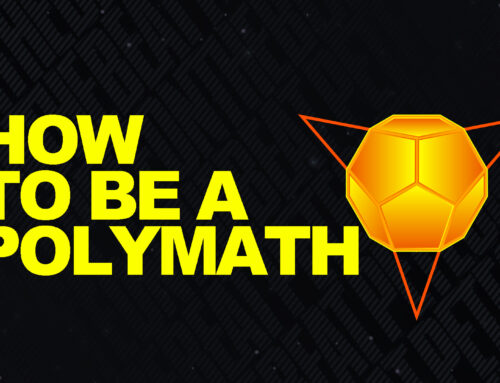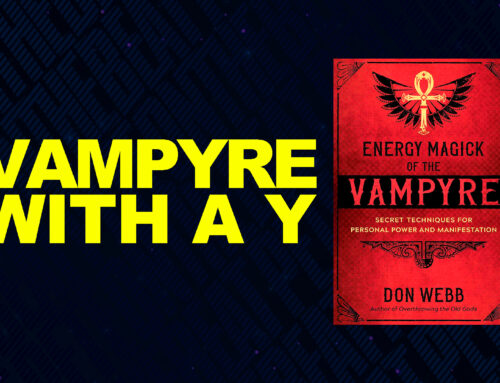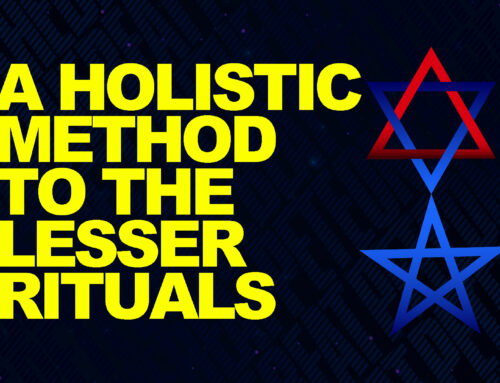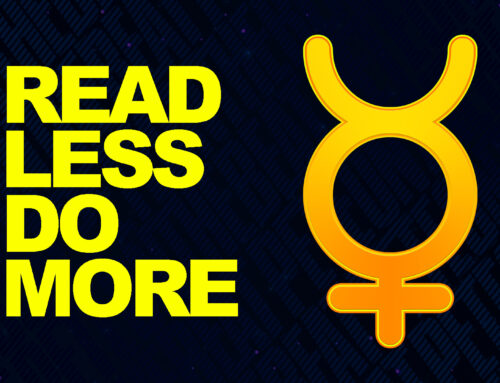Disclaimer:
No parts of this video should be taken as medical advice. If struggling with anxiety or any other disorder, one should make informed decisions by researching first and then seeking help.
The First Time
It was the autumn of 2015, a sunny afternoon at the local park. I visit the place to disconnect and recharge, as being there promotes reflection and daydreaming. Enjoying autumn’s colors, such as Nature’s unique shapes, I was suddenly hit by inexplicable fear. Escalating and all-consuming, it wasn’t like anything previously experienced. My health felt jeopardized in the blink of an eye. And a horrible danger appeared approaching — I had no doubts I was fainting or having a heart attack.
Time stretched, and I felt like falling apart, somewhat removed from transport. Shaken by jitters, I could barely pull my phone out, only to see its battery dying. Luckily, it lasted enough to call my mother, asking her to request an ambulance while describing my destination. Somehow understanding the situation, Mom made up an explanation. She said my condition was due to some pest spraying (done earlier). While none of that had actually happened, I took the words seriously. This made things tolerable. Finally, I rode a cab home like nothing happened. Yet, the autumn proceeded with a few similar episodes.
2016
At the peak of my self-help junkie phase, I searched for ways to increase productivity by all means. Pressured by hustle culture, I (already) had elevated anxiety, which I (basically) ignored. Pushing myself further, I felt shame for not meeting some ‘gurus’ expectations. Eventually, I also experimented with what is known as the ‘nootropic king,’ Modafinil. The same was advocated by biohackers like Dave Asprey and his Bullet Proof Diet. Though it was considered primarily safe, new studies show its long-term effects are questionable. Whether my limited experiments unlocked or led to what happens next can be debatable, as I don’t have concrete evidence. On the contrary, my usage preceded a few years of crippling anxiety.
Panic Attacks
They say a black hole is a singularity gone mad. I say a panic attack is anxiety, which did the same. It is physical fear so intense it shakes the core of your being. In the Teachings of Don Juan, Carlos Castaneda defines fear as a traitorous enemy reappearing and changing its face. This resonates with how my panic attacks changed (or perhaps evolved.)
The Face of Fear
Initially, it was the fear of fainting, falling apart, and/or getting a seizure, which I never did, BTW. Then, the shortness of breath. The perceived breathing difficulties coupled with feeling my lungs stuck, unable to contract. The mostly permanent pseudo-dysphagia. Or the fear of choking resulting from sometimes hours-lasting intense chest and throat tension. And then, the (actual) phagophobia, the fear of swallowing due to feeling my throat shrunk, and even saliva could be too much.
Food Textures
I avoided many food textures to prevent potential complications. For similar reasons, often, I spat my saliva. Previously, these were classified as separate conditions. Now, an increasing number of researchers view them as different forms of panic attacks rooted (all) in anxiety. Especially when they are coupled with an unbearable fear. Considering its rapid escalation, the last felt like my body was injected with it. So, I sought to escape it.
Disadvantage
Usually, my panic attacks lasted between a half and two hours. Occasionally, they prolonged for up to six. Imposing limitations, the anxiety drastically altered my life. From the fear of leaving my block and ultimately home — agoraphobia, now considered an advanced panic disorder — to rushing out of the gym and the supermarket, leaving weights and grocery carts.
Conditioned Reflex
Forming thought patterns (and Pavlov’s conditioned reflex) after 2016, I had negative connotations with all my favorite places. Thus, I avoided them. While that included the mentioned park, it reached a point where going anywhere other than training and grocery shopping was no longer possible.
Dating
My dating took a toll — not much happens when you can’t leave the block. That worsened things, as having sex and connecting with a partner makes us human and relieves anxiety. Revolving my day around my panic attacks, I went through the ‘exact safe’ ways when moving from one ‘secure’ place to another. Or doing anything, especially showering or going to the toilet. No one wants to have a seizure or get choked when doing either of these.
Permanent Danger
Feeling permanently jeopardized, I was letting others know my exact location. Because who knows? That might have been (exactly) when something in my throat (or lungs) snapped, and I needed an ambulance. Eventually, I (also) carried two phones — a cruel punishment for a hard-core introvert, which makes you feel like a prisoner or as if crippled, having a disadvantage.
All Consuming Fear
Panic attacks consumed much of my vitality. Unlike standard anxiety, they always followed increased sleepiness and yawning. A predictor of relief, the second indicated that the panic attack ended but also drained a massive amount of energy. It is a deeply craved moment of calmness but also one of defeat as the panic attack basically ‘consumes’ you.
The Moment of Defeat
Like many, I initially refused to acknowledge the issue. Eventually, things hit the fan, forcing me to start researching. It was similar to realizing your alcohol and/or drug addiction jeopardizes your future. It happened after an episode in late 2018. It was a six-hour-long panic attack on top of a cold with a sore throat. Covered with several blankets, yet having cold limbs, in those six hours, I felt my throat shrinking and its walls touching. Whether it was only in my head that kept me from swallowing my saliva. It also forced me to seek answers.
Searching For Answers
As a self-help junkie and ‘bio-hacker,’ I first turned to personal development and science. Panic attacks are our body’s fight-or-flight response being hijacked. The fight-or-flight developed as part of our survival mechanism. Evolving from hunter-gatherers, in the past, our species faced life-threatening dangers regularly. While that’s no longer the case, the fight-or-flight still plays a role. That includes situations when a car (or perhaps a bear) approaches us fast. Or when there’s a potential threat, like in a fight. The chemicals the fight-or-flight releases aren’t to hurt but to prevent getting hurt — to go through the situation by fighting or removing ourselves.
Brain Chemicals
Besides noradrenaline, that includes a hefty dose of melatonin’s antagonist, cortisol, the fear hormone. There’s no issue with that. The problem comes when the fight or flight gets triggered without real reason (frequently). Often, this is explained by burnout, PTSD, and childhood trauma(s). The first is the consequence of staying in survival mode for too long. The latter two cause personality deficits, poor stress tolerance, and others deserving a separate discussion.
Conventional Wisdom
Conventionally, panic attack treatment includes drugs and cognitive behavior therapy, such as combinations of both. This reminds me of most advice I got back then. It was to take medications like SSRIs, which I refused, as, based on my research, doing so leads to dependency, making things worse. Some were afraid panic attacks are contagious. For others like them, panic attacks are not ‘contagious’ or even slightly dangerous. They are the person’s own protection gone berzerk.
Doctors
For the time being, I went to several doctors, usually pulmonologists. The visitations began with feeling like choking. They ended with the doctor telling me I had about a hundred blood saturation due to my active lifestyle. I also bought a top-tier BP monitor and spent an obscene amount on lancets and strips. It was to measure blood glucose about thirty times daily, making my pinky look like a pincushion. Thankfully, these were great, as I already controlled insulin through fasting and diet.
Holistic Approaches
Eternally grateful for the impact OMAD, NoFap, and ancestral eating had on my life quality, I decided to approach things similarly. Holistically, the most recommended tactics for combating anxiety include reducing stress, staying hydrated, daily exercise, fasting, and eliminating carbs while opting for a high-fat and protein diet to keep stable blood glucose. The reason is that panic attacks are often a byproduct of blood sugar dysregulations. Other tools are optimizing sleep, NoFap, and relaxation techniques like gratitude, journaling, mindfulness, and meditation. Regular sex helps as it stimulates oxytocin and serotonin, whereas porn damages the brain similarly to coke. While life-changing, I was already doing most of those. I also practiced mindfulness, gratitude, and journaling, thanks to authors like Nevil Goddard and Napoleon Hill. Yet, nothing seemed to work regarding my issue.
Facing Death
According to mainstream self-help, I had to toughen up, man up, ‘hustle hard,’ ‘grind harder,’ and be more disciplined. Sometimes, such suggestions were coupled with ‘Memento Mori.’ Now, unlike others expecting it to happen, sometime in the (distant) future, people with panic attacks face death regularly. Some suffer a very unpleasant one a few times a day. Struggling alone, they count the seconds to the mentioned deep yawn, assuring they will be fine for the next hours or even day. If they get lucky. Moreover, often, high-performers are those with panic disorder.
Panic Attacks vs. Depression
Based on 34 years of living, depression & panic attacks are nothing alike, though usually both are caused by chemical imbalances. With the first, discipline and ‘toughening up’ through willpower can have a chance… If you have solid routines. When a ‘real’ panic attack hits, things drastically change. The experience is extremely intense and even more so physical. Depending on its severity, the anxiety can entirely shut down the pre-frontal cortex, which is responsible for reasoning, logic, intellect, and self-control. Then, the brain’s more primal parts, the ancient brain, take control. So there’s not much willpower/self-control to exert.
Not Giving Up
Despite feeling defeated, I refused to give up. Deep within, I knew there had to be something beyond the toxic positivity and mindless discipline-fanboying (mostly) lacking research on behavior and self-control. Around that time, I also became fascinated with the concept of ‘total self-improvement.’ Thanks to people like Joe Despenza and Aubrey Marcus. It appeared I neglected an aspect of it I always questioned — spirituality.
Shamans and Plant Medicine
Researching more, I learned about people healing traumas and going through katharsis with the help of shamans, retreats, and plant medicine. On the contrary, doing ayahuasca and going on long retreats did not feel appropriate. At least not, for my materialistic Virgo mind. Let alone that it was unavailable, as no shamans or deserts are around.
The Element of Luck
Once, when cleaning old stuff, I found a bunch of books. One was a translated version of the Teachings of Don Juan, a present I got as a kid with my mom’s wishes to ‘create my own reality.’ Some others included her French Co-Masonry encyclopedia, white gloves, and an apron such as Dion Fortune‘s Psychic Self-Defense and Cosmic Doctrine. I remembered them being stored with others and a couple of Tarot Decks I played with as a child. All this felt familiar, natural, and inviting.
Pure Curiosity
Driven by curiosity, I looked for English copies of those and similar titles. What grabbed my attention was an author appearing, whether I searched for Dion Fortune, Nevill Goddard, or even Dale Carnegie. That author was Israel Regardie. Particularly his Middle Pillar and Art of True Healing. Initially, I paid no attention. Ultimately, I read an incomplete copy of the original Middle Pillar. Doubting I understood everything, I got intrigued by two claims. One, (paraphrasing) the gods and demons of the past became the archetypes and phobias of the future/present. And two, so-called neuroses (including panic disorders) result from tension and poor communication between the Ruach or conscious mind (ego) and the Nephesh (or Animal Soul.) While this was eye-opening, the even better was that breaking that tension was one of the Middle Pillar’s utilities. It lets the free energy flow, engaging the high consciousness.
Science
Regardie finding common grounds between Qabalah and science really fascinated me. This included describing Qabalists (and magicians) as empirical scientists. Also, distinguishing Magick from superstitions and hexes. That made trusting him natural. It also made me consider a master’s in psychology, which I took the same years.
Though the program didn’t care much about Jung or Assagioli, it inspired me to research the newest discoveries on behavior and self-control, which later proved invaluable. Considering the One Year Manual, Christopher Hyatt, and his friendship with RAW, Regardie (also) didn’t ignore those.
The Tree of Life
The Middle Pillar introduced me to the Tree of Life, which, though highly complex, felt extremely intriguing. I learned about the four parts of the soul. And this was game-changing. Elsewhere, I found phobias and anxiety being regarded as a byproduct of the ego punishing or forcing the nephesh too much. This made sense, considering my experience with hustle culture. It also resonated with many of the recently discovered consequences of exerting too much self-control and/or trying to assimilate too much information (too rapidly).
Limitations of the Ruach
Improvements are only possible when Nephesh’s powers, i.e., psychosexual energy, are appropriately channeled. Thanks to Dion Fortune, I learned that the Ruach can not pick goals, organize, and plan haphazardly. The reason is that Hod’s intellect and reasoning are only possible due to Netzach’s emotions, passions, and desires being the basis for the Nephesh’s instincts.
Reasoning and Emotional Brain
As mentioned in other videos, this provides a deeper understanding of the rational and emotional brain dynamic. According to Standford Baba Shiv and the late Christopher Hyatt, the reasoning brain only rationalizes the decisions the emotional has already made.
The Middle Pillar
Soon after reading the complete Middle Pillar, I stood still and breathed rhythmically for 20-30 minutes every morning. I also followed the Qabalistic Cross with the basic Middle Pillar thrice daily. While meditation didn’t do much previously, things were different then. Still excruciating, my anxiety was more manageable. The difference allowed me to visit more places, not rush out of the gym, nor let others know my location. Happy with that, I made the mentioned non-negotiable daily practice as important as the gym.
Change
Changing my performance expectations, I also developed an instinct to ensure my Nephesh was satisfied and got what it wanted. Yet, the improvements were only partial. I still had around one panic attack daily, with about two severe weekly.
Palm Reading
Somewhat enabled to date, I dated a lady who was into Agni Yoga and occasionally visited Bali for shamanic ‘group workings.’ For some reason, she had a distaste for Western Magick. And very ‘bad connotations’ with Crowley. One day, this lady insisted on giving me a palm reading. In doing so, she said there was a great darkness in my past, and I spread myself too thin. Though I hated it, my fear moved me toward the light by pulling myself together and reminding me time was limited. Not in general, but here and now. This resonated with the shared reflections on ‘Memento Mori…’ and instinctively devoting much of my ‘anxiety-free’ time to writing OMAD GAINS, building my writing habit as if my life depended on it.
SIRP
Working through different books, I learned a technique called the Supreme Pentagram Ritual. Appreciating its invigorating effects and how responsible it was making me, I made the rite part of my daily practice. Something I didn’t realize is that, to a great extent, SIRP can make hard-wired notions and conditioning questionable/optional. Especially, when using the associated with pre-formative states fire and water, which is also supported by followers. It eases you ‘to say the least’ into digging deep and doing internal work through difficult-to-ignore trains of thought. This way, you can re-examine episodes from your past and present, extract meaning, and develop new ones, if necessary. As mentioned elsewhere, it creates a predisposition for what Christopher Hyatt called ‘Undoing Yourself.’
Contemplating the Fear
Once, when I got out of a slightly distant grocery store, I experienced a severe panic attack. Following the conditioned reflex, I was about to go through my precautions routine: speeding my walk, prepping my phone, focusing on bodily sensations, etc. Rather than engaging in those, however, I noticed an unusual desire to stay and see what would have happened. It was almost as if an inner voice told me I could go, but that was optional. Why don’t you stay and see if you will (actually) choke or pass out? What if this whole panic disorder is optional.
Zooming Out
After a moment, I was no longer focused on the panic attack. There was no tunnel vision but an internal monologue and self-contemplation. This shifted my attention from the fear to whether my response was appropriate and then to the surroundings. It transitioned from a narrow and zoomed-in to a wider one like a zoom lens. Moving fast, this train of thought made me conclude that my ‘secure measurements’ weren’t (really) helping. They were reinforcing the conditioned reflex.
Getting out of the Tunnel
The episode showed me that escaping the tunnel is not by focusing on it but by shifting your attention to anything and everything else. As Tony Robbins says: ‘Energy goes where attention flows.’ Once attention shifts, the panic attack drops from nine or ten to five or six. Tolerable enough, this lets us focus further on other things. The more that happens, the more you are out. The issue isn’t necessarily fear per se. Often, it is the conditioned reflex one initially develops when not knowing what happens.
A Hole in the Wall
They say magick brings apocalypse, which means rending the veil. It shows the truth for what it is. The depicted moment of truth didn’t cure my panic attacks. It felt like making a hole in a prison cell wall. Letting light in, this hole made the ‘Law of Attraction’ work like it was on steroids. Soon, I became aware of numerous researchers regarding shifting attention as superior for combating anxiety. Some even claimed that the breathing and meditation techniques actually aim at that.
Switching the Channel
As if by magick, I stumbled upon Joseph Ledoux’s Anxious. Dealing with anxiety disorders, the book gives tons of practical advice. Yet, it felt like something wanted me to read it just for one concept: ‘Our brains are like TV receivers; anxiety is only one of the channels we can watch.’ The shared experiences put the remote control in my hands. From then on, nothing was the same. It was a synchronicity similar to Rick Rubin (accidentally) opening a book on a page only to read a life-saving sentence. I still had panic attacks, yet I could manage them by shifting my attention. They no longer felt like a prison but more like losing ground, here and there.
The Dangers of Vacuum
At some point, I found excess banishings create a vacuum. As Mark Stavish reminds us, Nature hates that, filling it however it finds suitable. I thought SIRP counteracted that, keeping me balanced. On the contrary, paying more attention to my results’ totality showed my introversion deteriorated. As mentioned elsewhere, there was apathy, and my goals and aspirations felt unusually distant.
Starting All Over
Having such reflections, once, when meditating after a SIRP (this time with a specific charge of intent and rending the veil, as the rite works with the ‘veil of Paroketh’), my mind landed on the conclusion to start from scratch. Solely on intuition, I assumed invoking often and enflaming myself might help burn my anxiety, whereas too much banishing gives it room to manifest. I thought of it as a virus/cancer to burn and not give room to grow. I also reflected on all holistic approaches bringing value to my life, as opposed to conventional wisdom, and (then) wondered why magick had to be different.
Alternative Ways
Searching for alternative ways, thanks to Scott Stenwick, I learned about the ‘Operant Model,’ which I discuss extensively. Soon, I swapped all my banishings for their invoking counterparts. I also began emphasizing the Three Pillars rite over that of the Middle Pillar. It took a week, and I began experimenting with planetary forces — something I wanted but had been putting off for the last six months of banishing. Wonder why. Meanwhile, extensive usage of SIRP Fire coincided with a desire to quit coffee — an unthinkable notion, considering I had abused it since third grade.
Quitting Coffee
The ‘Law of Attraction‘ worked again, leading me to studies on caffeine elevating cortisol. The body elevates cortisol between 5 and 6 am as part of a counter-regulatory hormone response. There’s no issue with that. The problem occurs when attempting to sustain waking up at 3 or 4 am with coffee, as hustle culture prescribes. This sets oneself up for too much cortisol, increasing chances of panic attacks at around 7 or 8 am. Although this wasn’t the only time I had mine.
I found independent researchers exposing companies selling coffee with caffeine ten times the norm. After quitting coffee earlier, a gym buddy slept for two days. I did that and experienced nothing, pushing two daily SIRP Fire with an invoking and operant field, really engaging courage. I (just) became ‘somewhat unhealthily’ aware of exactly how much resentment (and anger) I had toward a former family member. Ultimately, quitting caffeine improved things but didn’t eradicate my anxiety.
A Solid Platform
Emphasizing invocations keeps my psyche grounded like a solid ground under my feet. It’s like a reliable platform on which I walk and make changes. There is no vacuum, only a base for accomplishing something. Once you realize you won’t choke or die, overcoming a panic attack can happen purely through common sense, which excess banishing can also banish. Let me know if that resonates.
Fighting Disbalances
Achieving balance is one of Magick’s goals. The tactics depend on your psychological makeup. Reflecting on sephirothic polarities and personality deficits, I recognized unproductive Geburan forces dominating my childhood and teenage years. This proceeded with an obsession to control my life through sheer willpower — a misunderstood Geburah and a bad joke with a high price.
Expansion
Using Paracelsus (GD) attribution, I began working with Jupiterian spirits. Rather than limiting the workings to Thursday, I used GRH, the planet’s positioning, and the actual hours. I started visiting my favorite places in about two weeks. And that felt like Jove’s expansion expanded my options.
The Reflection of Chessed
Focusing on Jupiter resulted in an instinctual need to explore Hod (Mercury). Initially, I thought something wanted to balance itself, as Hod is Geburah on a lower arc. Or that this had to do with me being Virgo. On the contrary, Chessed emanates Hod, which is its reflection. So, I started alternating those planets. Besides helping me write my second book about discipline built through systems and organizations ruled by HOD, such a regimen boosted my reasoning and common sense. Reasoning myself out of a panic attack became readily doable. So, I devised new ‘thought routines’ for different scenarios; I also got into coding as a side hobby.
Reason and Communication
One night, I encountered a UX/UI designer open to discussing coding. At that moment, something made me recall Don Webb‘s prescription for magicians to have a long and meaningful relationship to help them understand themselves and the Universe. Whether she fits Webb’s definition can be debatable, as she doesn’t want to do anything with magick besides supporting it as part of who I am. Yet, her being around inspired me to (massively) step up my game regarding my practice, personal development, and life. Two years later, I have no doubts my girlfriend meets Webb’s criteria. And whether that has anything to do with it, Chessed/Jupiter is the ‘Vision of Love’ and ‘The Element of Luck.‘
Occasional Anxiety
I might get anxious or panicky occasionally, but that doesn’t escalate how it used to. If I overdo my invocations, I can also have disturbing thoughts, which I know how to shut down readily. So, I feel liberated knowing resources like time and willpower are limited. It is up to me to make the most out of them by keeping my ego and nephesh in permanent collaboration, each getting its own.
Meaning and Philosophy
In Book 4, Crowley regards Philosophy as Magick’s enemy. IMHO, that’s only true if one attempts to put it before ritual, scientific research, and life experiences. Following those, philosophy extracts meaning.
Elements
Elemental Magick allows making the most out of the past by giving it a different meaning. Also, to see some truths for what they are. This often implies an apocalypse, which can hurt as structures and dogmas collapse before one heals. Reflecting on that, I often view panic attacks and their roots in childhood traumas as loosely mapping to the Fall Myth. The newborn is close to the divine. Everything is possible. Then, Leviathan happens in the face of parenting, schooling, and conditioning. Later, when the person attempts to transcend those, Leviathan starts causing trouble from within. This results in anxiety, phobias, depression, and anything keeping one stuck.
Panic attacks can also be examined alongside Gurdjieff’s ‘kundabuffer’ and ‘superhuman’ efforts. According to ‘In a Search of Being,’ ‘true’ self-actualization is an act against God and Nature. I’d say this mostly is the dominating egregore and conditioning. Usually faced by close to unbearable resistance, ‘true’ self-actualization is only possible through ‘superhuman’ effort. Much of the resistance comes from what Beelzebub defines as Kundabuffer. Whether an actual organ, the latter resembles in many ways Leviathan, keeping one relapsing/falling to their programming.
Planets and Signs
Planetary and Zodiac magick lets one reinvent themselves, aligning with who they want to be. They go hand-in-hand with Logotherapy and Morita Therapy, building the appropriate identity while opening ways to a desired future. And usually, this has to do with, utilizing the pillars of function.
Whatever the case, this wraps up how I got into Magick about 6+ years ago. It was to increase my chances of solving a problem sucking the life out of me. Six years later, I (mostly) use it for the same. Yet, thanks to it, I have much better problems. But that’s just my opinion. Let me know your thoughts and whether my story resonates.
Thank you for your time!
- An Autobiography of Trauma Book Review - April 23, 2024
- Reflections on Being a Polymath - April 12, 2024
- Greater Hexagram Ritual Manual Overview - March 31, 2024
